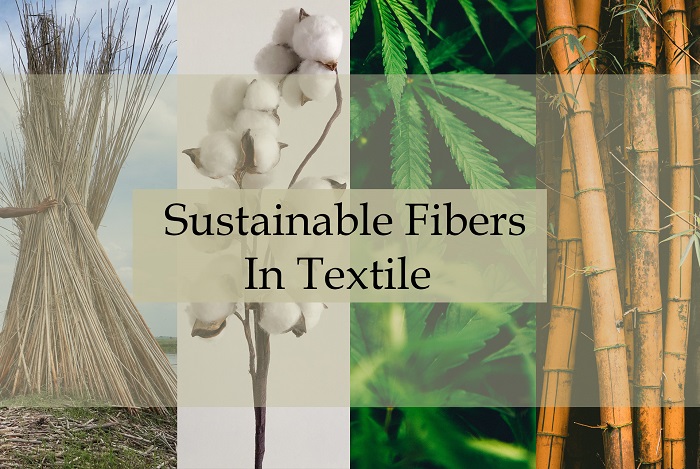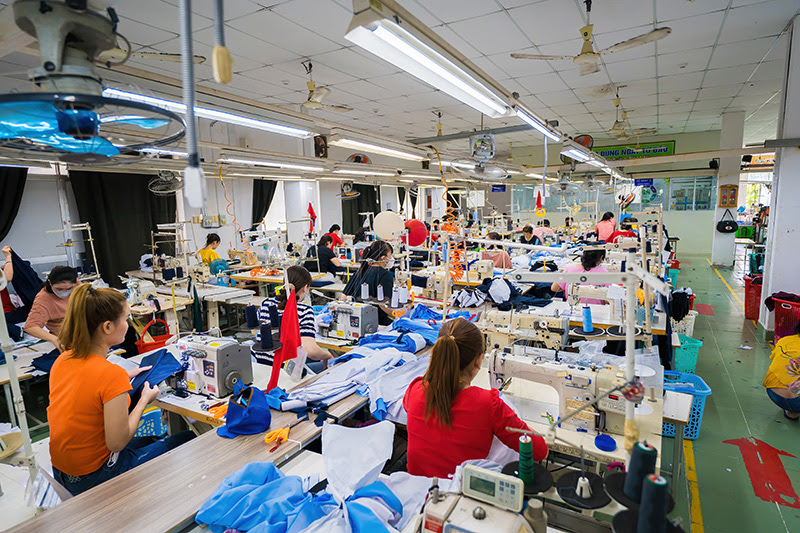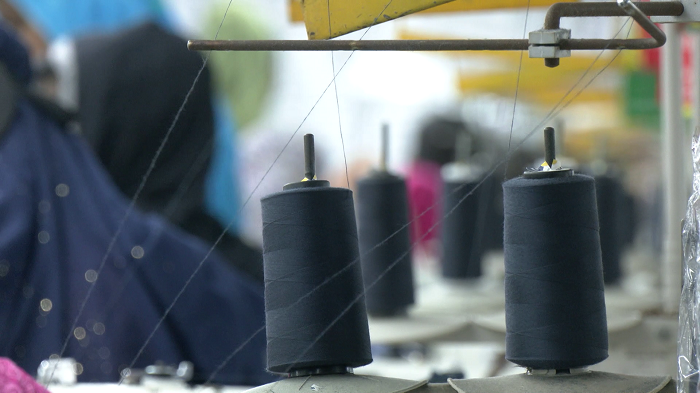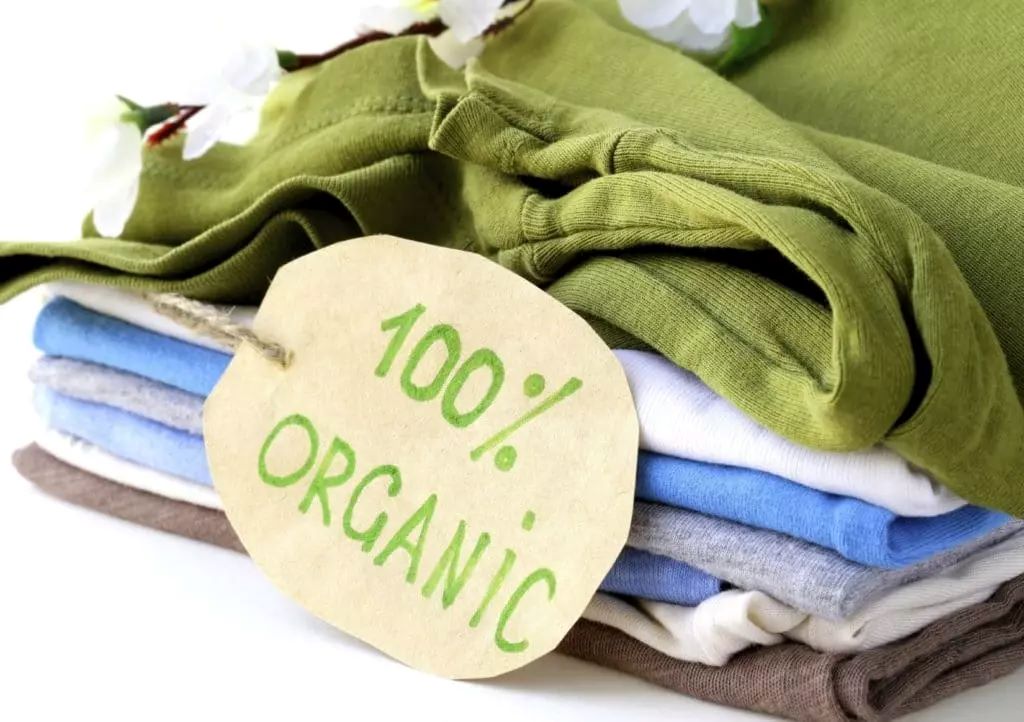
The cotton shirt, a wardrobe staple for generations, is facing a new challenge: man-made fibers (MMF). This shift in the global shirt industry is driven by a confluence of factors – functionality, affordability, and ever-evolving fashion trends.
A balancing, cost vs performance
Cotton reigns supreme in breathability and comfort, but its price fluctuations and water-intensive cultivation cast a shadow. Studies reveal that MMF currently holds a staggering 70% share in global fiber consumption. "Consumers are willing to pay more for a shirt that offers superior performance and comfort," says Sarah Jones, a textile analyst. Brands are responding with a spectrum of options catering to diverse budgets and needs. Synthetic fibers, generally cheaper to produce, are a boon for fast fashion and budget-conscious consumers. Fast fashion giant H&M exemplifies this by actively incorporating recycled polyester into their clothing lines, touting affordability alongside sustainability benefits.
Function reigns supreme
Beyond cost, synthetic fibers offer functionalities that cotton struggles to match. Analysts at Apparel Views highlight the growing demand for performance-driven textiles. Polyester and nylon blends, renowned for their wrinkle resistance, require minimal ironing – a major perk in today's fast-paced world. "Synthetic fibers offer features like wrinkle resistance, moisture-wicking, and durability," points out Faruk Hasan, President of the Bangladesh Garment Manufacturers and Exporters Association (BGMEA). These features are particularly sought after in activewear and performance shirts, but are increasingly finding their way into everyday wear as well.
The rise of blends
While synthetics are gaining ground, pure polyester isn't the only story. Blended fabrics, particularly cotton-polyester mixes, offer a middle ground. Industry estimates suggest MMF already hold a significant 70% share of global fiber consumption. These blends combine the breathability of cotton with the wrinkle resistance and affordability of synthetics. The future likely lies in even more innovative hybrid fabrics that bridge the gap between comfort and functionality.
Regenerated cellulose fibers like rayon are gaining traction for being a natural alternative to synthetics while maintaining some of their functional benefits. Some studies indicate rayon has displaced wool in many important uses, including shirting, due to its affordability and comfort. Fashion trends also play a role. The rise of athleisure and activewear, with their focus on moisture-wicking and flexibility, has pushed up demand for synthetic fabrics designed specifically for performance. Patagonia, a leader in outdoor apparel, exemplifies this trend. Their ‘Capilene Cool Lightweight Shirt’ is made with a recycled polyester blend that prioritizes moisture-wicking and breathability, perfect for active pursuits.
A global landscape woven with diverse fabrics
The shift towards synthetics isn't uniform across the globe. The US market, for example, presents a complex picture. While synthetics dominate apparel consumption (around 75 per cent), cotton imports still hold a slight edge over man-made fibers. Rising oil prices, which impact synthetic fiber production, could temporarily swing the pendulum back towards cotton.
The European market shows a growing interest in sustainable alternatives. Regenerated cellulose fibers, like viscose rayon derived from wood pulp, are gaining traction due to their eco-friendly appeal. However, even in Europe, the demand for wrinkle-free and easy-care shirts is driving a rise in synthetic blends.
The future of shirt fabrics likely lies in innovation. Sustainable alternatives like Tencel, a wood-based fiber, are gaining traction. "We're seeing a growing interest in eco-friendly synthetics made from recycled materials," says Marie Dubois, a fashion designer specializing in sustainable clothing. The industry is also exploring new ways to improve the comfort and breathability of synthetics, potentially blurring the lines between natural and man-made fibers.
The cotton shirt may not be facing extinction, but the industry is clearly weaving a new narrative. Consumers seeking function, affordability, and sustainability will have a wider range of fabrics to choose from, ensuring a comfortable and stylish fit for the future.
A total of 39 Vietnamese garment and textile enterprises participated in the leading international trade fair for fashion and apparel procurement, Texworld New York City 2024.
Held from July 16-18, 2024, in New York, United States, this three-day fair attracted hundreds of suppliers and designers from the global textile and garment supply chain.
The Vietnamese enterprises showcased products featuring diverse and creative designs, with many items made from eco-friendly materials such as coffee and lotus fibers. Ambassador Dang Hoang Giang, Vietnam's permanent representative to the UN, expressed his admiration for the impressive presence of Vietnamese apparel products in New York City, which is recognised as one of the world's premier fashion centers.
Textile and garments are key export products for Vietnam having significant potential for market expansion. Ambassador Giang emphasised on the importance of approaching potential customers, staying abreast of fashion trends, and focusing on innovation to meet the demands of discerning markets like the US.
He also recommended, local associations and businesses enhance coordination with Vietnam’s representative agencies in the US, including the Permanent Mission of Vietnam in New York. This would help Vietnamese products gain a stronger foothold in the local market besides fostering new growth opportunities for the apparel industry and strengthening trade links between the two nations, he said.
A specialist in sorting and logistics for end-of-life apparel and footwear, Canadian company Debrand, has launched its first US textile sorting facility in Columbus, Ohio.
This new 32,000-sq-ft facility aims to enhance North America's textile recycling infrastructure by responding to increasing demands from brands and local governments for more sustainable disposal options. The facility features both automated and AI-enabled sorting equipment alongside traditional hand-sorting techniques.
Debrand already operates a similar facility in Vancouver, Canada, and subcontracts sorting operations from WM in Arizona and South Carolina. The company views Columbus as an ideal location due to its proximity to numerous well-known clothing brands, thus reducing shipping distances for processing.
Driven by interest from chemical recyclers and potential state textile EPR policies, Debrand expects the North American textile recycling market to grow. Currently, the region has limited facilities to process textile waste. However, the volume of garments produced each year is becoming insurmountable, says Amelia Eleiter, CEO and Co-founder of Debrand. She emphasises on the need for more regional solutions to address this issue at scale.
The US Government Accountability Office recently also highlighted the need for innovating textile recycling in the city to make the process more effective and accessible. Debrand has already diverted over 4.5 million pounds of textile waste from disposal in the last 18 months, working directly with brands to manage unsellable items and find buyers for resale markets.
Debrand's Ohio facility will combine human sorters with advanced technology, including AI-powered systems that collect data on items and brands to determine the best recycling or resale options. The company is also exploring partnerships in chemical recycling, such as a pilot with Eastman to recycle 5,000 pounds of textiles into recycled fiber.
Waste from the global apparel industry leaks about millions of tons of plastic in the environment every year, says a study conducted by the North Carolina State University
As per the study, the global apparel industry generated more than 20 million tons of plastic waste in 2019, with about 40 per cent potentially leaking into the environment, leading to a process known as 'plastic leakage.'
Richard Venditti, Professor -Paper Science and Engineering, NC State and Co-author of the study, notes, a significant portion of the plastic waste leaking into the environment comes from discarded clothes, particularly synthetic apparel. Additionally, waste is generated during manufacturing, packaging, and transportation, as well as from microplastics released into water during washing.
In 2019, synthetic apparel was identified as the largest source of plastic waste, accounting for 18 million tons. Researchers estimated that approximately 8.3 million tons of this waste may have leaked into the environment. Cotton clothing contributed 1.9 million tons of plastic waste, while the remaining 0.31 million tons came from other fibers. Unlike synthetic apparel, the plastic waste from cotton and other fibers primarily originated from packaging materials.
The study also finds that the location of apparel sales is not necessarily where plastic waste leaks into the environment. For apparel sold in high-income countries like the United States and Japan, most pollution occurred in lower-income countries where these clothes might end up in the secondary market. This points to a significant issue with the consumption habits in higher-income countries.
The study concludes by urging the apparel industry to adopt a more circular framework, emphasising recycling and reducing waste. It also recommends increasing the use of renewable, non-synthetic textiles.
The paper, titled ‘The global apparel industry is a significant yet overlooked source of plastic leakage,; appears in the open-access journal Nature Communications. The corresponding author is Anna Kounina of Quantis, with co-authors including Jesse Daystar, Sophie Chalumeau, Jon Devine, Roland Geyer, Steven T Pires, Shreya Uday Sonar, and Julien Boucher.
Global sports company Puma aims to expand its textile-to-textile recycling innovation, Re:Fibre by producing millions of replica football jerseys containing a minimum of 75 per cent recycled textile waste and other waste materials.
Starting from the 2024/25 season, Puma's football replica jerseys, including those for the Euro and Copa América tournaments, will be made using Re:Fibre.
Building on the success of the 46,000 Re:Fibre jerseys produced in 2023, Puma aims to reduce textile waste and decrease reliance on plastic bottles for recycled polyester products.
To achieve this, the brand is exploring various methods of recycling polyester, such as thermo-mechanical and chemical recycling techniques, to significantly enhance its capacity for recycling textile waste.
The brand aims to create 100 per cent of its polyester products from textile waste, says Anne-Laure Descours, Chief Sourcing Officer, Puma. It also plans to various activities at its New York flagship store, coinciding with the launch of the AC Milan and Manchester City home replica kits.
On July 20, 2024, the brand will sell one hundred limited edition badges, upcycled from match-worn jerseys by Jack Grealish and Christian Pulisic in stores.
On July 21, 2024, Andrew Burgess, Voice of RE: Generation, Puma will lead three upcycling workshops, teaching fashion enthusiasts techniques to customise and upcycle clothing to extend its lifespan.
India’s leading textile company Sportking India has launched a new technology called Controlled Release Enhanced Mating Interruption Technology (CREMIT) to support farmers boost their cotton production under the ‘San-Vardhan’ (cotton you can trust) initiative.
Launched in partnership with ATGC Biotech, the technology helps protect the cotton crop from Pink Bollworm (PBW) attack. It is currently being implemented across 2,000 acre in three districts of Punjab and Haryana.
Munish Avasthi, Managing Director, Sportking India, says, the CSR project San-Vardhan with CREMIT technology helps supports cotton farmers in North India by addressing the issue of PBW attack.
Dr. Baljinder Saini, Executive Director, Reviving Green Revolution Cell, the implementing partner for this project adds, similar initiatives need to be launched in other cotton growing areas in Central and South India.
A manufacturer of diversified range of textiles, Sportking India caters to the evolving demands of the weaving and knitting industry in India.
A significant decline in the area under cotton cultivation in Punjab, Haryana and Rajasthan, has caused cotton candy prices to rise by 0.4 per cent to Rs 57,640.
The area under cotton cultivation in these three states has declined to10.23 lakh hectare from last year's 16 lakh hectare. In Punjab, the area under cotton cultivation has dropped sharply to 97,000 hectare from 7.58 lakh hectare. Similarly, cotton cultivation in Rajasthan declined from 8.35 lakh hectare last year to 4.75 lakh hectare this year, while Haryana's area under cotton fell from 5.75 lakh hectare to 4.50 lakh hectare in 2024.
Delays in shipments from the US and Brazil is also helping boost demand for Indian cotton from mills in neighboring countries. According to the 2024/25 US cotton projections, in June 2024, beginning and ending stocks are expected to remain higher compared to last month, with projected production, domestic use, and exports remaining unchanged. Ending stocks expected to increase by 400,000 bales higher to 4.1 million.
Globally, the 2024/25 cotton balance sheet shows increases in beginning stocks, production, and consumption, with world trade unchanged. World ending stocks are projected to increase by 480,000 bales to 83.5 million from May 2024.
Technically, the market is experiencing short covering, with open interest remaining unchanged at 358 contracts while prices increasing by Rs 230. Cotton candy is currently supported at Rs 57,380, with potential testing of Rs 57,130 if prices fall below this level.
Growing at a modest rate of 0.93 per cent, Pakistan’s textile and apparel (T&A) exports reached $16.55 billion in the FY 24 from $16.50 billion the previous year, as per the latest data from the Pakistan Bureau of Statistics (PBS).
This marginal increase underscores the challenges faced by the sector including new taxation measures and rising energy costs, which may impact its competitiveness compared to regional counterparts.
Recently, the government raised the tax rate on exporters' personal income for the fiscal year 2024-25, a move that industry analysts believe will affect future export figures.
According to PBS data, Pakistan’s textile exports declined by 3.91 per cent Y-o-Y to $1.41 billion in June 2024 from $1.47 billion in June 2023, ending a five-month streak of growth. On a M-o-M basis, Pakistan’s textile exports also fell by 9.23 per cent in June 2024.
Within the textile sector, specific categories showed varied results for FY24. RMG exports increased by 2.05 per cent in value and 1.99 per cent in volume during the year, while knitwear exports decreased by 0.66 per cent in value but increased by 41.44 per cent in volume. Bedwear exports grew by 4.12 per cent in value and 15.27 per cent in volume to reach $2.8 billion.
Towel exports increased by 5.55 per cent to $1.06 billion in value and 14 per cent in volume. However, cotton cloth exports declined by 7.7 per cent to $1.866 billion in value, despite a 16.15 per cent increase in quantity.
Conversely, the import of textile machinery plummeted, indicating a reduction in industry investments towards expansion or modernisation.
Better Cotton, the world’s largest cotton sustainability initiative, has partnered with FS Impact Finance to launch a fund aimed at supporting smallholder farmers in the cotton sector. The Memorandum of Understanding (MoU) between the two organizations outlines plans to pilot the fund in India.
The initiative will address the financial challenges faced by smallholders, who constitute over 90 per cent of the world's cotton farmers but often struggle to access financial support due to their Farmer Producer Organisations’ (FPOs) lack of credit history. In India, only a few of the 16,000 FPOs, which represent more than 5.8 million farmers, have access to formal financial markets.
The new fund will incentivize cotton farming communities to invest in women’s empowerment and climate resilience by eliminating traditional financing barriers. It aims to support FPOs in implementing gender and climate resilience activities, improving their credit history, and enabling them to develop sustainable growth plans.
Better Cotton CEO Alan McClay highlighted that the collaboration with FS Impact Finance could significantly advance ongoing efforts in India, emphasizing the initiative’s inclusive approach. FS Impact Finance Managing Director Martin Cremer noted that the fund aims to enhance conditions for smallholder farmers and contribute to the development and professionalization of local value chains.
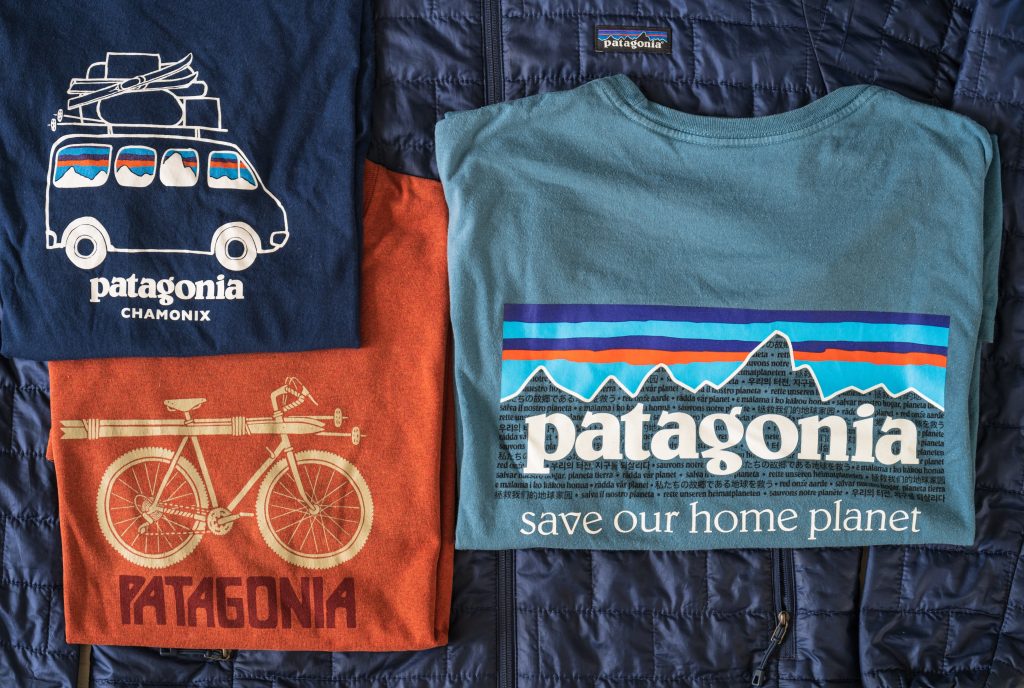
Patagonia, the outdoor apparel giant, is facing a unique challenge: how to be a successful business while prioritizing environmental well-being. This struggle, known as the ‘Patagonia Paradox’, highlights the inherent tension between traditional business models focused on growth and sustainability efforts.
Fashion industry's environmental footprint
The fashion industry is a major contributor to pollution, relying on excessive production and consumption. Fast fashion, in particular, thrives on cheap, disposable clothing, leading to environmental damage and textile waste.
Patagonia's stance
Patagonia has long been a champion of environmental activism. The company encourages mindful consumption through its "Don't Buy This Jacket" campaign and focuses on building durable, long-lasting products. Additionally, Patagonia donates 1 per cent of its sales to environmental causes and recently converted itself into a trust dedicated to fighting climate change. It even restructured itself to make ‘Earth’ its sole shareholder. However, their core business – selling outdoor gear – inherently creates environmental impact. Every new item produced has an environmental impact. The company is exploring alternative models like resale (Worn Wear) to address this challenge.
Resale, a viable solution
CEO Ryan Gellert sees resale as a key strategy. Resale offers a more sustainable alternative to constant production. Patagonia's Worn Wear program allows customers to buy and sell used Patagonia gear. While profitable, resale is still a small portion of Patagonia's overall business. And critics argue resale simply encourages more consumption overall.
However, Patagonia isn't just focused on changing its own operations. Their 2011 "Don't Buy This Jacket" ad campaign famously urged consumers to reduce consumption. More recently, their mockumentary "The Shitthropocene" uses humor to address the environmental impact of fast fashion. However, some find such efforts preachy or lacking substance.
The paradox
Patagonia's efforts are not without criticism. Some view their sustainability messaging as hypocritical, and their use of plastics in some products contradicts their environmental goals. Their reliance on synthetics, even recycled ones, creates microplastic pollution. The company's lobbying efforts can be seen as contradictory. Additionally, their advocacy for stricter regulations can put them at odds with industry groups.
Despite the challenges, Patagonia remains a leader in sustainable business practices. Experts acknowledge Patagonia's positive impact while recognizing the inherent environmental footprint of a growing business. Patagonia's journey towards a more sustainable business model is ongoing. Challenges include finding alternatives to virgin plastics, navigating a changing regulatory landscape, and maintaining consumer trust. Despite these hurdles, Patagonia serves as an example for businesses seeking to balance profit with environmental responsibility. Whether their approach is a ‘magic trick’ or a work in progress, Patagonia's efforts are a step towards a more sustainable future for the fashion industry.
- 1
- 2
- 3
- 4
- 5
- 6
- 7
- 8
- 9
- 10
Peeling Back the Fabric: Glimpact study gives true ecological threads of apparel…
A groundbreaking new study by Glimpact, has pulled back the curtain on the often-obscured environmental footprint of the apparel industry,... Read more
Embracing Innovation: The rise of sustainable fibers in a changing world
The quest for sustainable and high-performance alternatives to traditional resources has sparked a revolution in fiber use. According to the... Read more
Garment Tech Istanbul to showcase cutting-edge apparel technology and drive glob…
A global hub for apparel innovation Istanbul will welcome leading global players in garment, embroidery, and textile machinery from June 25... Read more
From discarded threads to global trends, Panipat's recycled yarn revolution
Panipat, a city synonymous with textiles, is rapidly evolving from a traditional weaving hub to a powerhouse of sustainable yarn... Read more
Bangladesh emerges strong in global RMG exports as China's loses ground
Bangladesh is rapidly strengthening its position as a major player in the global apparel export market, capitalizing on a shift... Read more
Blossom Premiere Vision returns in June to support luxury fashion's shifting nee…
As the global luxury goods market grapples with a prolonged slowdown, an industry once resilient to crises is now undergoing... Read more
Monforts technologies power sustainability showcase at Kingpins Amsterdam
Denim mills using Monforts systems dominate eco-focused fabric displays At the recent Kingpins Amsterdam exhibition held on April 16-17 at the... Read more
Bangladesh RMG exports navigate new skies amid cost concerns post India's trans-…
Bangladesh's RMG export is adapting to India's revocation of trans-shipment services, marked by maiden freighter flight carrying 60 metric tons... Read more
A stitch in time, fashion's 1% solution to a carbon crisis
The fashion industry, built on trends and textiles, is facing a stark reality: its environmental footprint is unsustainable. Hidden deep... Read more
Threadbare Foundations: Bangladesh’s RMG boom hangs by Indian yarns
Bangladesh’s ready-made garment (RMG) industry is a global juggernaut. Second only to China in apparel exports, the sector is the... Read more


